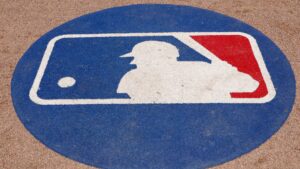Major League Baseball’s Economic Landscape: A Potential Shift in the Balance of Power
As we look ahead to the future of Major League Baseball (MLB), an important evolution could be on the horizon—a shift toward a more structured economic model that includes a salary cap. At Extreme Investor Network, we’re diving deep into the implications, potential outcomes, and unique insights surrounding this discussion, which has the potential to reshape the sport as we know it.
A League Without a Cap
For decades, MLB has distinguished itself from other major U.S. sports leagues by opting for an unrestricted spending model—one that has allowed teams to pursue their competitive goals without a salary cap. However, behind the scenes, MLB owners, led by Commissioner Rob Manfred, are privately contemplating the introduction of both a salary cap and a salary floor as the end of the current Collective Bargaining Agreement (CBA) approaches in December 2026.
According to sources familiar with the discussions, these potential changes are being considered amidst concerns about competitive balance, particularly in smaller markets. Unlike the NFL, NBA, and NHL—all of which benefit from salary caps to maintain competitive parity—MLB teams operate under a largely unfettered financial structure. This has resulted in stark disparities in financial resources, which, as we’ll explore, could lead to challenging times ahead for the league’s relationship with its players.
The Stakes of the CBA Negotiation
Current spending differences are at an all-time high; for instance, the New York Mets’ payroll dwarfs that of the Miami Marlins—$323 million versus $67 million. Such discrepancies fuel criticism regarding the long-term viability of MLB’s current framework. If MLB can manage to implement a salary cap, it might curb the growing inequities and foster a competitive environment where teams can reasonably aspire to victory, regardless of market size.
Manfred recognizes the growing frustrations among fans in smaller markets, stating, “Our game turns on fans having hope when you enter the season.” This suggests a burgeoning understanding within the league that maintaining fan engagement is increasingly tied to competitive balance—a sentiment echoed by executives across the industry.
Inclusion of Salary Floors
While the MLB Players Association (MLBPA) has staunchly opposed the idea of a salary cap, it may be receptive to the introduction of a salary floor. A salary floor could essentially ensure that all teams must invest a minimum amount in their player roster, providing a safety net for lesser-known talent and ensuring that fans in small markets have something to cheer for.
With such strategies in mind, it’s intriguing to consider the potential for greater overall economic health within the league. According to Joel Litvin, a former NBA executive, aligning player salaries with league revenues could have resulted in an additional $2.3 billion in earnings for players over the last decade. This insight shows that reevaluating economic structures within MLB could actually benefit both players and teams.
Disparities Beyond Salaries: The RSN Crisis
Another factor influencing MLB’s uneven financial landscape is the arrangement of Local Media Rights. The significance of regional sports networks (RSNs) cannot be overstated; they have historically provided a crucial revenue stream for teams. However, a changing media landscape—with decreasing cable subscriptions and the emergence of streaming services—could further exacerbate disparities. While the Los Angeles Dodgers enjoy a lucrative deal exceeding $300 million a year, smaller teams like the Marlins struggle to generate comparable revenues, earning merely $50 million annually.
As these contracts expire and MLB negotiates new media rights deals in 2028, the pressure to implement a salary cap could intensify. If the league wishes to create a fairer playing field, it must adapt to the realities of the current economic environment and the needs of its franchises.
The Path Ahead for MLB: Opportunity or Impasse?
As we approach December 2026, the tension between owners and players is palpable. While MLBPA prepares to leverage its financial reserves to support non-star players in the event of a lockout, it’s crucial for both sides to realize that the future of MLB depends on a recommitment to competitive balance.
The question remains: can both sides find common ground? If owners successfully implement a salary cap alongside a salary floor, we could see a revitalized league that draws in fans with stories of underdogs and champions alike. Ultimately, the success of America’s pastime relies on more than just its biggest stars; it thrives when all players feel they have a seat at the table.
At Extreme Investor Network, we’ll be following this story closely, unpacking the financial elements affecting not just baseball, but the world of sports overall. As this narrative continues to unfold, what’s clear is that the symbiotic relationship between player value and team profitability is more crucial than ever. Stay tuned for further developments as we unravel the complexities of MLB’s evolving economic landscape.

